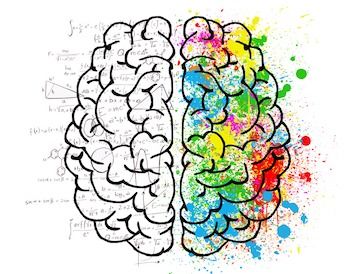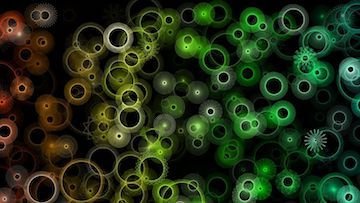The Twelve Links Of Dependent Origination
THE FOUR NOBLE TRUTHS
DEPENDENT ORIGINATION (paticcasamuppada)

The twelve links of dependent origination explain the cycle of suffering in existence, usually listed in a forward order. This shows what the causes are that establish and lead up to suffering. For this post, I’d like to accentuate the twelve links in reverse order. This is to show that each part is caused by the arising of the previous in the 12 links of the chain of dependent origination (paticca samuppada) and more importantly, when the links of dependent origination are broken, how the cycle of suffering in existence ceases:

12. OLD AGE [AGEING] and DEATH (jaramarana)
“And what, monks, is old age? If there is old age for all kinds of beings in whatever kind of existence, their getting frail and decrepit, the breaking [of their teeth], their becoming grey and wrinkled, the running down of their life span, the deterioration of their sense faculties—this, monks, is called old age.” — Mahasatipatthana Sutta
“And what is ageing and death, what is the origin of ageing and death, what is the cessation of ageing and death?
The ageing of beings in the various orders of beings, their old age, brokenness of teeth, greyness of hair, wrinkling of skin, decline of life, weakness of faculties.
The passing of beings out of the various orders of beings, their passing away, dissolution, disappearance, dying, completion of time, dissolution of the aggregates, laying down of the body.
With the arising of birth there is the arising of ageing and death. With the cessation of birth there is the cessation of ageing and death.”— MN I.49
11. BIRTH (jati)

“And what, monks, is birth? If there is birth for all kinds of beings in whatever kind of existence, their conception, their being born, their becoming, the coming into manifestation of their aggregates, the acquisition of their sense faculties— this, monks, is called birth.” — Mahasatipatthana Sutta
“And what is birth, what is the origin of birth, what is the cessation of birth?
The birth of beings in the various orders of beings, their coming to birth, precipitation [in a womb], generation, manifestation of the aggregates, obtaining the bases for contact.
With the arising of being [becoming] there is the arising of birth. With the cessation of being there is the cessation of birth.” — MN I.50
10. BEING [BECOMING] (bhava)

“And what is being, what is the origin of being, what is the cessation of being?
There are these three kinds of being:

With the arising of clinging there is the arising of being. With the cessation of clinging there is the cessation of being.” — MN I. 50
9. CLINGING (upadana)

“And what is clinging, what is the origin of clinging, what is the cessation of clinging?
There are these four kinds of clinging:

With the arising of craving there is the arising of clinging. With the cessation of craving there is the cessation of clinging.” — MN I.51
8. CRAVING (tanha)

“And what is craving, what is the origin of craving, what is the cessation of craving?
There are these six classes of craving:

With the arising of feeling there is the arising of craving. With the cessation of feeling there is the cessation of craving.” — MN I.51
7. FEELING (vedana)

“And what is feeling, what is the origin of feeling, what is the cessation of feeling?
There are these six classes of feeling:

With the arising of contact there is the arising of feeling. With the cessation of contact there is the cessation of feeling.” — MN I. 51
6. CONTACT (phassa)
“And what is contact, what is the origin of contact, what is the cessation of contact?
There are these six classes of contact:

With the arising of the six-fold sense bases there is the arising of contact. With the cessation of the sixfold base there is the cessation of contact.” — MN I.52
5. THE SIX-FOLD SENSE BASES (salayatana)

“And what are the six-fold sense bases, what is the origin of the six-fold sense bases, what is the cessation of the six-fold sense bases?
There are these six bases:

With the arising of mentality-materiality there is the arising of the six-fold sense bases. With the cessation of mentality-materiality there is the cessation of the six-fold sense bases.” — MN I.52
4. MENTALITY [NAME] - MATERIALITY [FORM] (nama-rupa)

“And what is mentality-materiality, what is the origin of mentality-materiality, what is the cessation of mentality-materiality?
Feeling, perception, volition, contact, and attention — these are called mentality. The four great elements and the material form derived from the four great elements — these are called materiality.
So this mentality and this materiality are what is called mentality-materiality.
With the arising of consciousness there is the arising of mentality-materiality. With the cessation of consciousness there is the cessation of mentality-materiality.” — MN I.53
3. CONSCIOUSNESS (vinnana)
“And what is consciousness, what is the origin of consciousness, what is the cessation of consciousness?
There are these six classes of consciousness:

With the arising of formations there is the arising of consciousness. With the cessation of formations there is the cessation of consciousness.” — MN I.53
2. [KARMA] FORMATIONS (sankhara)

“And what are formations, what is the origin of formations, what is the cessation of formations?
There are these three kinds of formations:

With the arising of ignorance there is the arising of formations. With the cessation of ignorance there is the cessation of formations.” — MN I.54
1. IGNORANCE (avijja)

“And what is ignorance, what is the origin of ignorance, what is the cessation of ignorance?
This is called ignorance.

With the arising of the taints there is the arising of ignorance. With the cessation of the taints there is the cessation of ignorance.” — MN I.54
8. TAINTS (asava)
“And what are the taints, what is the origin of the taints, what is the cessation of the taints?
There are these three taints:

With the arising of ignorance there is the arising of the taints. With the cessation of ignorance there is the cessation of the taints.” — MN I.55
The complexity of dependent origination is quite clear, and the Buddhist teachings themselves acknowledge this, as it has been described as “difficult to see, difficult to awake to”, as well as “beyond the realm of logicial thought” (atakkavacaro). The difficulty stems from the fact that breaking through to the Dhamma [liberation] was a principle realized in a spiritual meditative sense, and the solution was not possible to be put into words affirmatively. The only way to communicate it was by using the Indian method of negation-without-affirmation (neti-neti), as in explaining something what it is not.

I will flag comment spam at 1% strength. If you keep on spamming my post, I will flag you at 100%. I don't care if you have limited English abilities, write a couple of sentences about this article, no copy-paste, please. I will flag: one sentence comments, links to your blog and begging for up-votes and follows. Also, I will åflag comments that have nothing to do with my blog's article. I will also check your comment section to see if you have been comment spamming on other blogs.


 A link to My Blog
A link to My Blog
This time, i feel my self have been drowned into this enlightening post
-12. Ageing and Death (Menua dan Mati)
-11. Birth (Jati = Muasal)
-10. Being (menjadi/berkembang)
-9. Clingin (melekat = meresapi hasil indra)
-8. Craving (dambaan/keinginan)
-7. Feeling (Perasaan)
-6. Contact (hubungan)
-5. The six-fold sense bases (enam indra)
-4. Mentality and materiality (nama-rupa/panggilan-bentuk)
-3. Consciousnees (Kesadaran diri)
-2. Formations (Susunan/bentukan)
-1. Ignorance (pengabaian menyeluruh)
this part is a little bit hard for me to understand
Taint = noda/cacat
and how it connected to the ignorance
thank you @reddust.
Excellent question @el-nailul, I am also confused about this and still struggle with addressing ignorance in my daily life.
There are three types of taints, the taint of sensuality, the taint of becoming and the taint of ignorance. And an extra taint added from a later text from the Abhidhamma called the taint of views.
The base for all the taints is ignorance when ignorance arises there is the arising of the taints. A good friend of the Buddha, Sariputta said this in the Nibbedhika sutta.
I hope this clears up the confusing, but since I am confused as well, I hope my confusion isn't contagious...hahaha
This getting a bit clearer for me, but this article will remain in my thought until I can figure it myself. I think the ignorance itself is a taint, because that is the process to free the soul from desire on something. it may be wrong, though...:D
@reddust,
You made a very informative article as always, and a very helpful post for the people who are willing to seek the truth about this life! I am pretty impressed as a Buddhist!
Cheers~
The articles are fun to write and my husband helps me with editing. The articles are formally structured and not very warm and cozy like a lot of new age, self help articles. I find this comforting because the work involved in letting go of ignorance is not comfortable, it can be painful and frightening.
Wao....
I guess i have missed a lot, thank goodness i saw this one. Been a while.
This was really an exhaustive expository and an in depth one in.
Buddhist teachings are indeed explicit are quite different from what we conventionally believe in, happy i am learning more.
Please i wanna ask, the names in bracket, are they alternative name for those words in buddhism???
Hellooo @cyprianj, the words in brackets are Pali a dead language from where the teachings of Gautama Buddha were written. Once I figured this out, the world around me started to make sense, because once you know these senses and impressions aren’t you, you can have compassion for everyone who is reacting and suffering, which includes me😁
Lol😁
Hmm, this is informative as usual. There is no dull moment reading any of your post, there are some places that got me confused in the post is the level of consciousness. I still don't get it.
I hope my post are not dull, my husband helps me edit my Dhamma posts and I will give him your compliment. Consciousness is confusing to me as well. I will look up some articles for you today and we can clarify what exactly is consciousness for both of us.
I will be waiting. No your post are not dull at all, it informative.
This post is very informative. Although the way you described aging sent shivers through me. The breaking of teeth and all. Dear Lord will I go through all that? All the same, it was an interesting article. Now I know if I don't want to cling I shouldn't crave.
If you practice equanimity aging will be an adventure, adventures are never comfortable and many times scary but many of us crave adventures. @zizymena, look at this life as a path to adventures and exploration!
your posts are extremely instructive, I adore that you generally need to know increasingly that you examine progressively or more all that you share this with us. Thank you @denissemata
Thank you @ripon063, I am happy my quest for freedom and wisdom can be shared with others and we can learn together.
your posts are really informative, I love that you always want to know more that you investigate more and above all that you share all this with us. Have a wonderful night
Thank you @denissemata, I truly enjoy learning about what Buddha taught.
That is the best thing to learn and above all enjoy what you learn..
This article is easier to follow and makes sense. these twelve all linked together beautifully and complete the cycle. mind-consciousness intrigues me. Thanks @reddust.
The weakest link is vedana (sensation)....this is my primary practice in meditation, break that link and fly free!

http://www.vridhamma.org/en2004-03
Really great post. Thanks for this informative post.